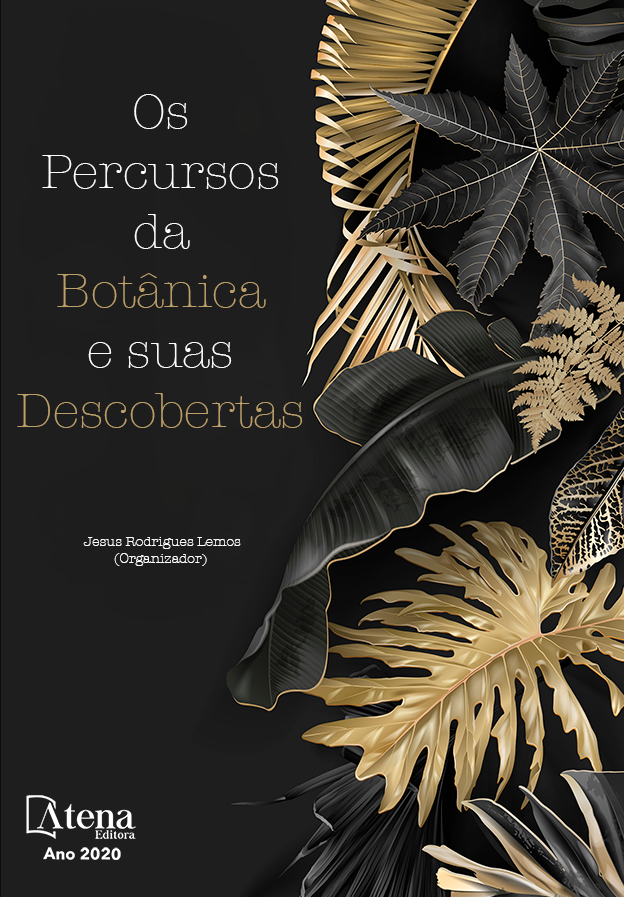
COMPARAÇÃO MORFOLÓGICA ENTRE DUAS ESPÉCIES EPÍFITAS DO GÊNERO Microgramma C. PRESL SENSU TRYON &TRYON (POLYPODIACEAE)
O gênero Microgramma C. Presl sensu Tryon & Tryon (1982), pertencente à família Polypodiaceae, encontra-se amplamente distribuído nas regiões tropicais do continente americano e possui aproximadamente 13 espécies. Possui espécies epífitas, cujas características morfológicas conferem-lhe adaptações para os ambientes que habitam. O presente estudo realiza uma análise comparativa morfológica do esporófito, assim como a presença e a localização dos compostos químicos nas folhas de Microgramma geminata (Schard). R.M. Tryon et A.F. Tryon e Microgramma vacciniifolia (Langsd. & Fisch.) Copel. Amostras da raiz, caule e folha foram coletadas em áreas de domínio público em Ilhéus, Bahia. As lâminas foram preparadas por cortes a mão livre e método usual de inclusão em parafina com dupla coloração com azul de alcian e safranina. Foram utilizados reagentes específicos para detectar os compostos químicos presentes nas plantas. A folha de M. vacciniifolia apresentou dimorfismo. A raiz de ambas as espécies é protostélica, diarca, com córtex parenquimático, esclerênquima em volta cilindro vascular com endoderme unisseriada, periciclo e floema externo ao xilema. Os caules apresentam-se como uma dictiostele, coberto por escamas subuladas, em M. vacciniifolia e lanceoladas em M. geminata. As folhas são hipoestomáticas. A epiderme, nas duas espécies, possui células com parede mais ou menos sinuosas cobertas por cutícula e estômatos anomocíticos. Apresenta hipoderme e mesofilo tendendo a bicolateral em M. vacciniifolia e mesofilo homogêneo em M. geminata. Os feixes vasculares são envoltos por células com espessamento em U ou O. As análises histoquímicas revelaram composto fenólico ao redor dos feixes vasculares, alcaloides, lignina e flavonóides. Apesar de serem espécies pertencentes ao mesmo gênero, as diferenças estruturais podem ser atribuídas ao hábito das plantas, pois M. geminata é hemiepífita escandente, enquanto M. vacciniifolia é hemicriptófita reptante. Apoio: FAPESB e UESC.
COMPARAÇÃO MORFOLÓGICA ENTRE DUAS ESPÉCIES EPÍFITAS DO GÊNERO Microgramma C. PRESL SENSU TRYON &TRYON (POLYPODIACEAE)
-
DOI: 10.22533/at.ed.6992004102
-
Palavras-chave: Anatomia, Constituintes químicos, Samambaias, Microgramma, Polypodiaceae.
-
Keywords: Anatomy, Chemical Constituents, Ferns, Microgramma, Polypodiaceae
-
Abstract:
The genus Microgramma C. Presl sensu Tryon & Tryon (1982), belonging to the Polypodiaceae family, is widely distributed in tropical regions of the American continent and has approximately 13 species. They have epiphytic species, whose morphological characteristics give them adaptations to the environments they inhabit. The present study performs a comparative morphological analysis of the sporophyte, as well as the presence and location of the chemical compounds in the leaves of Microgramma geminata (Schard). R.M. Tryon et A.F. Tryon and Microgramma vacciniifolia (Langsd. & Fisch.) Copel. Root. Stem and leaf samples were collected in public domain areas in Ilhéus, Bahia. The slides were prepared by freehand cuts and the usual method of inclusion in paraffin with double staining with alcian blue and safranin. Specific reagents were used to detect chemical compounds present in plants. The M. vaccinifolia leaf showed dimorphism. The root of both species is protostelic, diarrheal, with parenchymal cortex, sclerenchyma around vascular cylinder with uniseriate endoderm, pericycle, phloem external to the xylem. The stems are presented as a dictiostele, covered with subulate scales, in M. vacciniifolia and lanceolate in M. geminata. The leaves are hypoestomatic. The epidermis, in both species, has cells with a more or less sinuous wall covered by cuticle and anomocytic stomata. It presents hypodermis and mesophyll tending to bicolateral in M. vacciniifolia and homogeneous mesophyll in M. geminata. Vascular bundles surrounded by cells with U or O thickening. Histochemical analysis revealed: phenolic compound around vascular bundles, alkaloids, lignin and flavonoids. Despite being species belonging to the same genus, the structural differences can be attributed to the habit of plants, since M. geminata is a scandic hemiepiphyte, while M. vaccinifolia is a reptile hemicryptophyte. Support: FAPESB and UESC.
-
Número de páginas: 17
- Alba Lucilvânia Fonseca Chaves
- Letícia de Almeida Oliveira
- Matheus Bomfim da Cruz
- Jerônimo Pereira de França
- Lucimar Pereira de França
- Juliana Silva Villela


